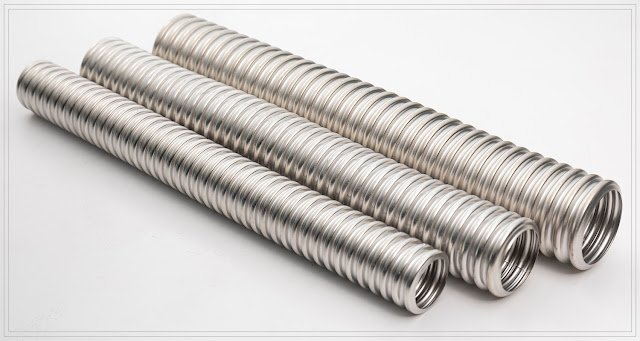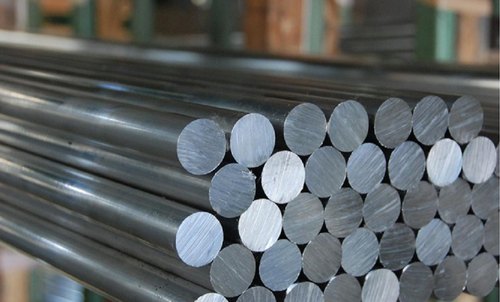Hastelloy is one of the best nickel-based steel alloys which provide high corrosion resistance. Compared to traditional alloys, hastelloys offers unique combination of properties that provide them with significantly stronger capabilities of corrosion resistance. Hastelloy family of chromium/ nickel/molybdenum alloys at elevated temperatures are ideal for use in highly aggressive chemical environments.
Hastelloy is useful in many different applications in the below listed categories
What is Monel?
Monel is primarily composed of 52-67% of nickel and copper, with little amount of silicon, manganese, iron and carbon. It is a group of nickel alloy and it is stronger than pure nickel. Monel alloys are corrosion resistant by many means, including fast flowing seawater. It can be readily fabricated by cold and hot working, welding and machining.
Monel Applications
Monel is useful in many different applications in the below listed categories
- Aerospace applications
- Marine applications
- Musical instruments
- Oil production and refining
Monel Properties
Monel work-hardens very quickly is very difficult to machine, as compared to steel and monel. It requires to be worked and turned at low feed rates and slow speeds. It is usually used in highly corrosive conditions applications. As compared to stainless steel, monel is much expensive. Monel alloy 400 is considerable for its toughness, which is maintained over a sustainable range of temperatures. At subzero temperature monel alloy 400 provides excellent mechanical properties. Its hardness and strength increases with impact resistance and slight impairment of ductility. Even when it is cooled to the temperature of liquid hydrogen it does not undergo a ductile-to-brittle transition.
Difference between Hastelloy and monel material price
Unlike Hastelloy which contains several other elements in its chemical composition, most monel alloys contain nickel between 60% to 70% in their chemistry. Since the cost of nickel is volatile, and the metal is a commodity, the value of nickel, as a metal is considered to be high. In comparison to monel, Hastelloy has lesser nickel in its chemistry, which makes monel the more expensive metal in comparison to the former.
Nickel content in Hastelloy and monel
Although both Hastelloy and monel contain nickel in their alloys, the addition of this element in their chemistry varies. While the monel alloys contain about 30% to 40% copper added in their alloy, the content of nickel ranges between 60% to 70%, depending on the monel grade manufactured. Whereas Hastelloy contains significant additions of elements such as ferrous or iron, chromium, molybdenum, cobalt, and tungsten, the remaining percentage of nickel is added to the alloys that it is intended to be manufactured. Therefore, the content of some hastelloys is lower than monel.
How to Identify Hastelloy and monel?
While metals tend to be similar to each other in terms of appearance, one of the most effective methods to identify both alloys is to obtain a mill test report or a material test report. In most cases, manufacturers are able to procure an MTR or a mill test report for the buying party, as a means of assuring the quality of the product. Generally, a material test report chronicles a detailed test report of the elemental composition of the material as well as its mechanical or physical properties.
Hastelloy and monel melting point
It is typical to note that several alloys do not have a single melting point, but, unlike pure metals, these alloys exhibit a melting range or a melting point. During this temperature range, the material or alloy is a mixture of both solid and liquid phases. This mixture of phases is referred to as a slush. The melting point of most Monel alloys is around a temperature of 2460 °F. While the melting point of Hastelloy grades is slightly higher ranging at about 2550 °F.
Hastelloy and monel yield strength
Yield Strength of a material is calculated as the stress the metal, or in this case, alloys can withstand without permanent deformation or a limit at which the said material will cease to return to its original dimensions, which is about 0.2% of its length. The yield strength at 0.2% Offset of various Hastelloy grades ranges between 310 Mpa to about 355 Mpa. Whereas, for monel alloys, the yield strength at 0.2% Offset could range anywhere between 240 Mpa to about 790 Mpa.
Monel and Hastelloy ultimate tensile strength
Unlike the yield strength that is calculated at 0.2% offset, the tensile strength of a material is the maximum stress which the alloy can endure while it is being stretched or pulled prior to either failure or break. The tensile strength of Monel alloys falls between a range of 550 Mpa to about 1100 Mpa. And in comparison to monel, the tensile strength of several Hastelloy grades falls in between the range of 690 Mpa to about 783 Mpa.





Comments
Post a Comment